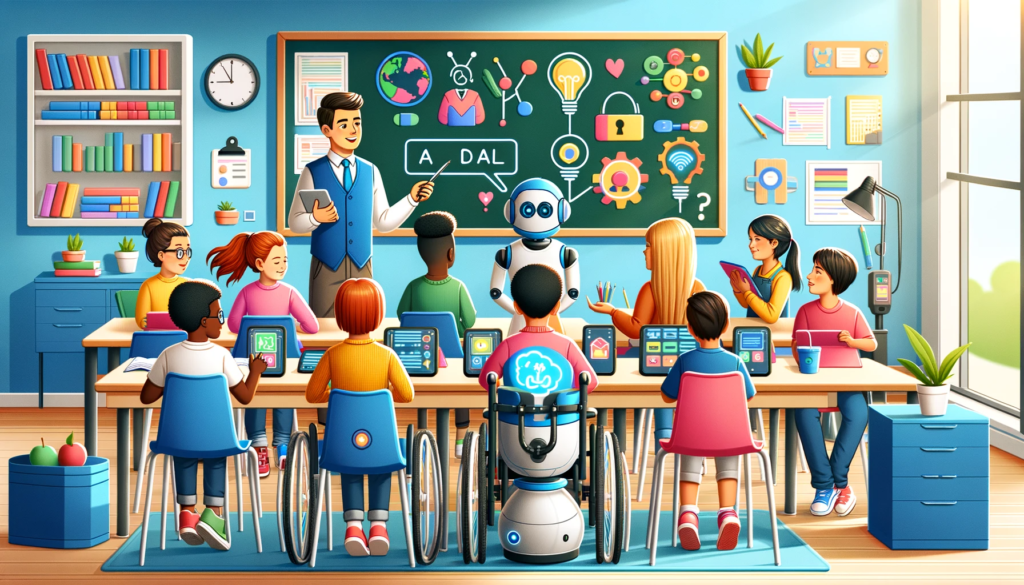How Can Artificial Intelligence Benefit Disabled People?
With artificial intelligence being a hot topic and the UK recently hosting the first-ever AI summit, it has sparked the question of how beneficial AI can be to disabled people.
Emma Purcell, the co-founder and editor of the online disability magazine Crip Life™, gives an AI overview, discusses some of the concerns people have about AI and looks at the many ways artificial intelligence can benefit disabled people.
What is artificial intelligence?
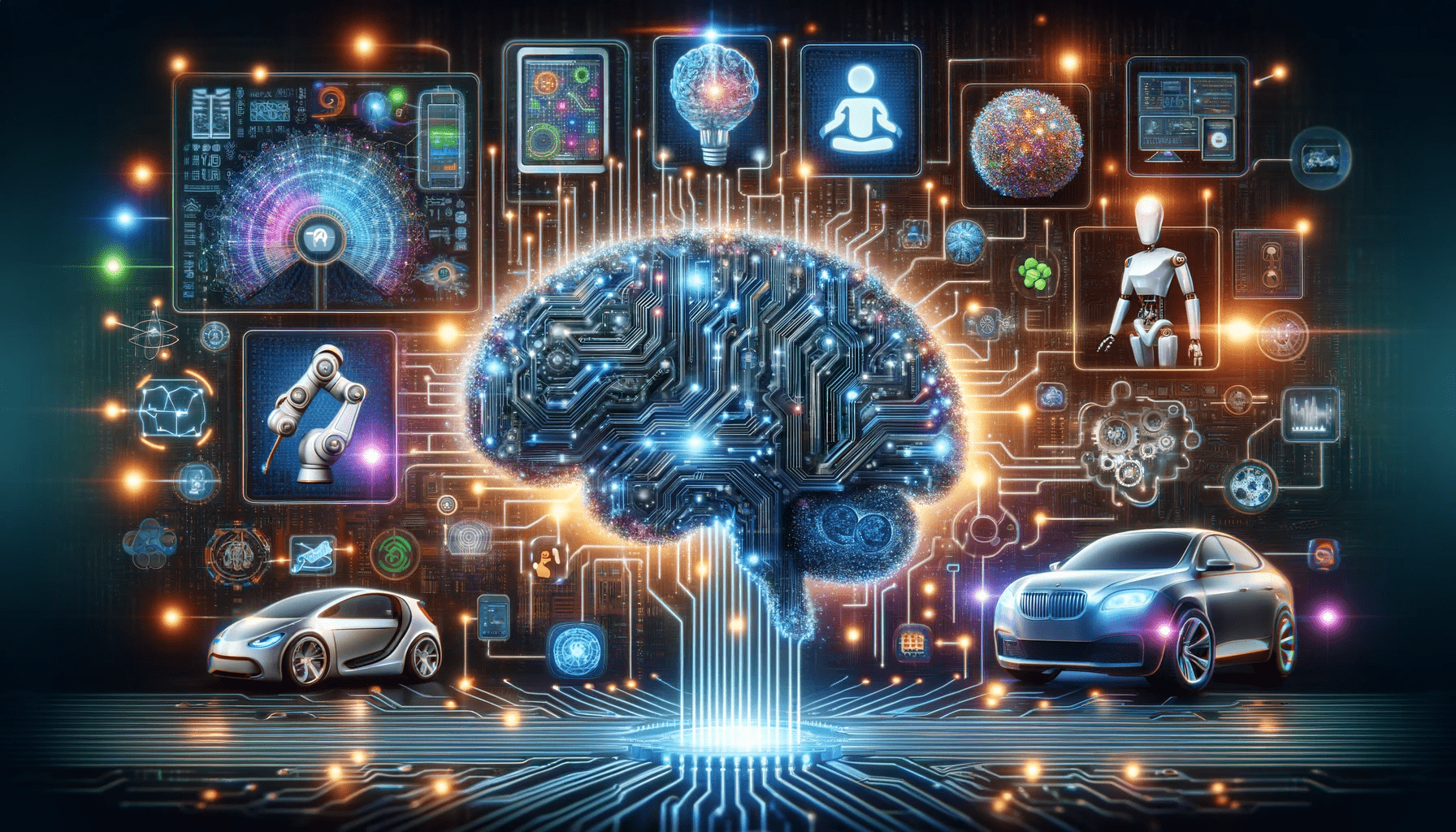
Artificial intelligence is the study and development of computer systems that can copy intelligent human behaviour. This can include analysing data, controlling machinery and problem-solving.
When some people first see or hear the words artificial intelligence, they immediately picture highly technical, complex and sophisticated software or robots taking over the world. Although, in some industries, AI can be very high-tech, advanced and expensive, many other types of AI can be used in everyday life from the comfort of your own home.
It is known that many individuals and organisations are sceptical of AI and it could pose a risk to people’s safety and security. There are concerns that AI could be dangerous and become a tool to spread misinformation, cause cyber-attacks, create weapons and even replace human intelligence.
There is also a worry that AI could impact jobs. However, speaking at the AI summit at Bletchley Park in October, the UK Prime Minister, Rishi Sunak, said: “We should look at AI much more as a co-pilot than something necessary going to replace someone’s job. AI is a tool that can help almost anybody do their jobs better, faster, and quicker.”
Here we intend to outline ways it can help disabled people in their ordinary lives:
New ways artificial intelligence can benefit disabled people
The development of artificial intelligence is at the forefront of people’s minds, with the potential to make the world more accessible and inclusive.
AI can give disabled people more independence and freedom, provide greater access to content and communications, offer emotional support and even help discover, treat or cure health conditions.
It is no surprise that the charity sector in particular has also recognised the power of AI to support people with disabilities, with platforms such as Microsoft 365 for charities and others integrating AI into their tech stack.
Smart home technology
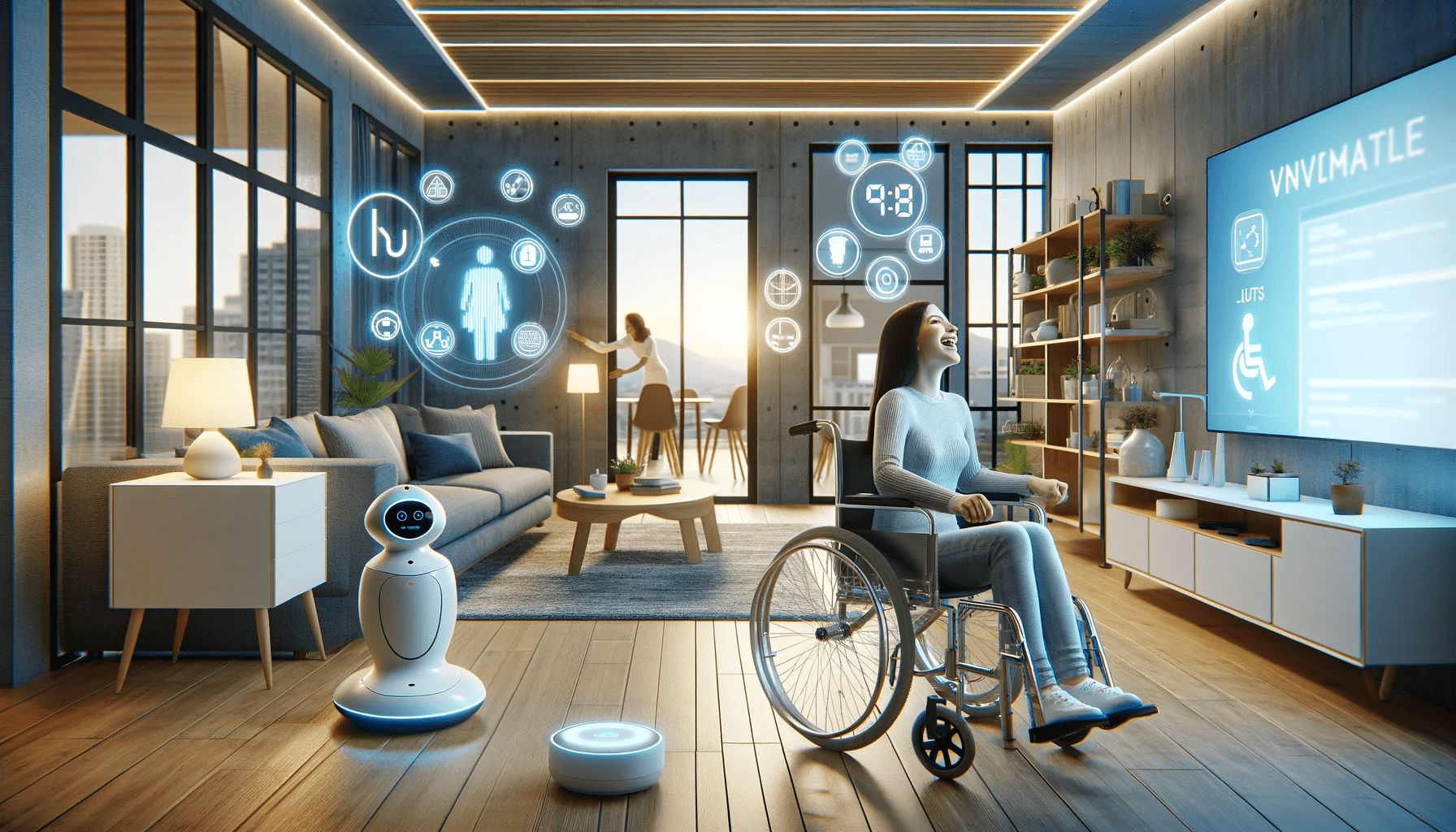
The most common and affordable form of AI is using smart home technology. With the use of smart home apps and smart speakers such as Alexa, Google and Siri, you’re open to accessing countless home appliances and online features.
You’ll have the ability to control things like lights, blinds, curtains, sockets, and heating. Also, you can use smart speakers to access a variety of features such as reminders, to-do lists, shopping lists, timers, music, audiobooks, podcasts, games and much more.
Smart Speakers and Autism
Smart speakers can also have a positive impact on people with neurodiverse conditions like autism. Many people on the autistic spectrum are known to like consistency, take things literally and like routine. Studies show that smart speakers can enhance how well others can understand the speech of people with intellectual disabilities.
AI has the potential to create more meaningful experiences for people on the autism spectrum.
“There have been stories about children with autism who have formed in-depth relationships with Siri or their personal assistants. It’s because the assistant doesn’t make any demands on them; they are not inconsistent in their responses,” said Robin Christopherson, Head of Digital Inclusion at AbilityNet.
Using an assistant like Alexa or Siri makes communicating very straightforward for someone with autism. They don’t have to contend with trying to understand nuanced body language, facial expressions, moods or the million-and-one other things that can be happening every time we talk to someone.
Improving Descriptions and Translations with AI for Disabled People
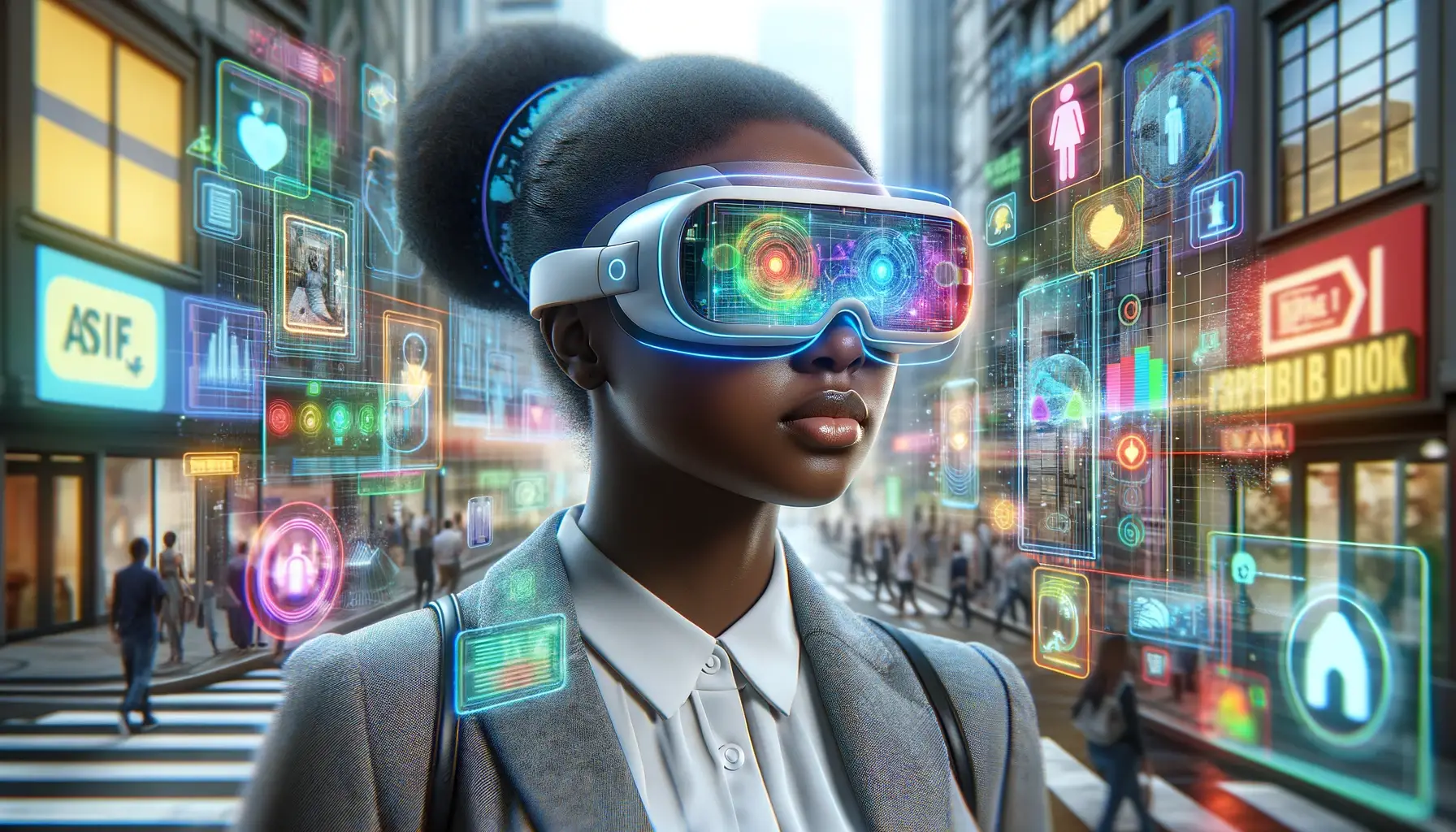 There are a huge and growing number of new tools that use AI to help disabled people. They make communication, getting around, and daily tasks easier.
There are a huge and growing number of new tools that use AI to help disabled people. They make communication, getting around, and daily tasks easier.
AI Tools for Visual Impairments
- Be My Eyes: An AI tool integrated into the Be My Eyes app, offering detailed descriptions of photos to assist blind or visually impaired users.
- Google AI: Google’s AI tool describes unlabeled images in multiple languages, aiding those with impaired vision. More about this on Google AI.
- Image to Text: Provides short, AI-powered descriptions of images. Available in both free and premium versions on Image to Text.
- Chat GPT 4o -has the ability to describe images. A new GPT “Alt Text Creator / Image Describer for VI users” has been created using best practice guidelines for visually impaired people. There is a post here about this new tool that is currently being tested.
Visual Impairment Assistance Apps table
| App Name | Function | Link |
|---|---|---|
| Be My Eyes | Describes photos for visually impaired | Be My Eyes |
| Google AI | Describes unlabeled images in multiple languages | Google AI |
| Image to Text | Short descriptions of images | Image to Text |
AI for Speech and Communication
- Google’s Parrotron: An AI tool that helps speech-impaired individuals convert distorted speech into fluent conversations. Learn more at Google’s Parrotron.
- Project Activate: Facilitates communication for non-verbal individuals using gestures or eye movements. Information available on Project Activate.
Speech and Communication AI apps table
| App Name | Function | Link |
|---|---|---|
| Google’s Parrotron | Converts distorted speech into fluent conversations | Google’s Parrotron |
| Project Activate | Communication tools for non-verbal individuals | Project Activate |
AI for Hearing Impairments
- RogerVoice and Otter.ai: Programs like RogerVoice and Otter.ai transcribe group conversations, aiding those with hearing loss.
Hearing Impairment AI Apps
| App Name | Function | Link |
|---|---|---|
| RogerVoice | Transcribes group conversations for hearing-impaired | RogerVoice |
| Otter.ai | Transcribes group conversations for hearing-impaired | Otter.ai |
AI for Reading and Learning
- Speechify Text Reader: Converts text into audiobooks, beneficial for individuals with dyslexia, ADHD, or sight loss. Check out Speechify.
AI for Mobility and Navigation
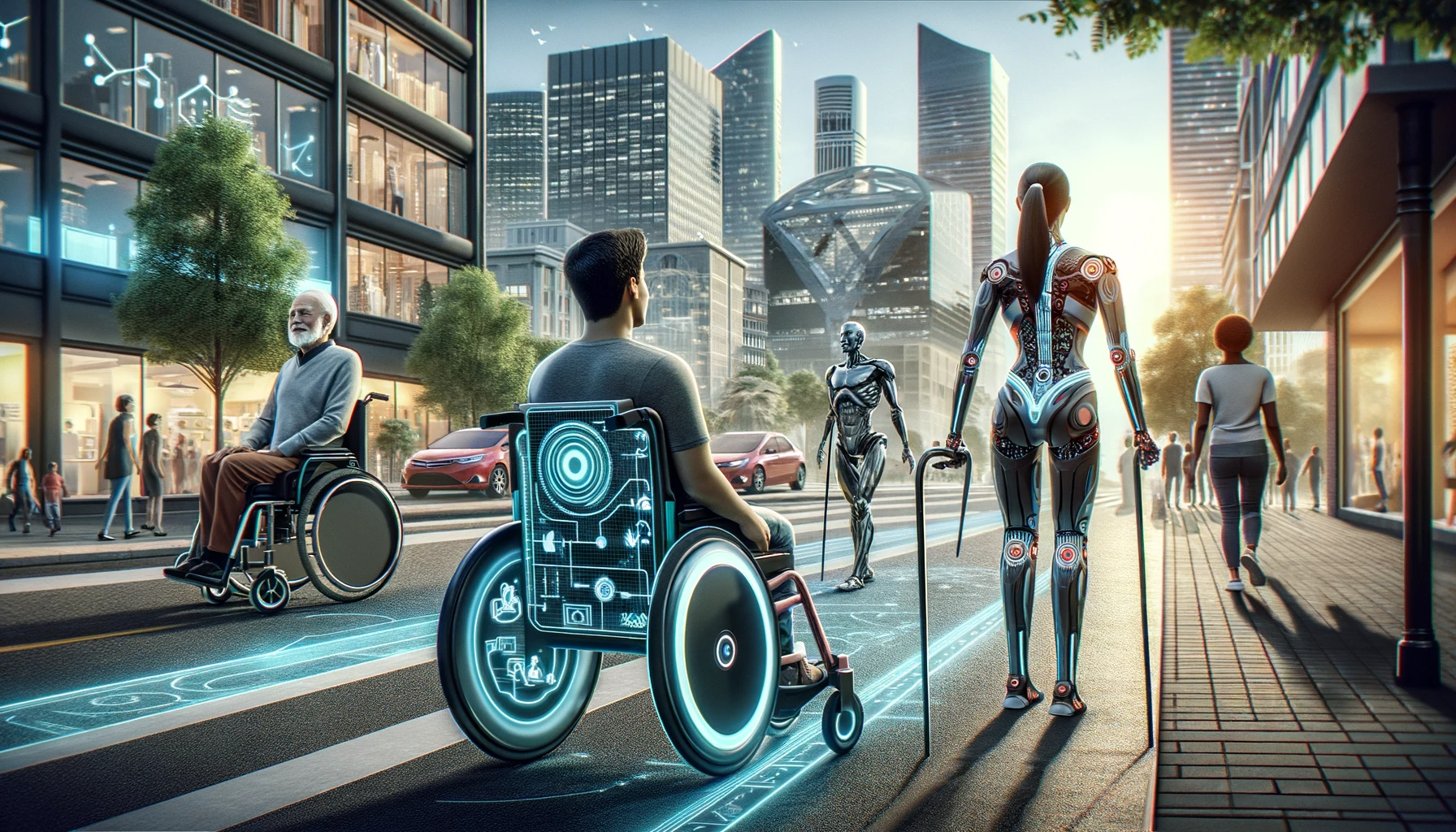
- Wheelmap: Assists mobility-impaired individuals in finding wheelchair-accessible locations. More on Wheelmap.
AI for Translation and Image Description
- Photo Translator: Translates text from images into over 100 languages. Discover more on Photo Translator.
- Pix2Pix: An AI model for image translation, based on Generative Adversarial Networks (GAN). Details are on Pix2Pix.
- DeepL: A machine translation provider supporting 26 languages. Find out more at DeepL.
- Reverso: Offers free AI translation for 18 languages. Available at Reverso.
- Copy.ai: Uses advanced language models for generating copy and translations. Learn about it at Copy.ai.
- Microsoft Translator: A free AI-powered app that translates text, speech, and images in over 70 languages. Available on Microsoft Translator.
- iTranslate: Supports translation of text, voice, and images in over 100 languages. Check it out at iTranslate.
Translation and Image Description AI Apps table
| App Name | Function | Link |
|---|---|---|
| Photo Translator | Translates text from images | Photo Translator |
| Pix2Pix | AI model for image translation | Pix2Pix |
| DeepL | Machine translation provider | DeepL |
| Reverso | AI translation software | Reverso |
| Copy.ai | Generates copy and translations | Copy.ai |
| Microsoft Translator | Translates text, speech, images | Microsoft Translator |
| iTranslate | Translates text, voice, images | iTranslate |
Communication and advocacy using AI assistance
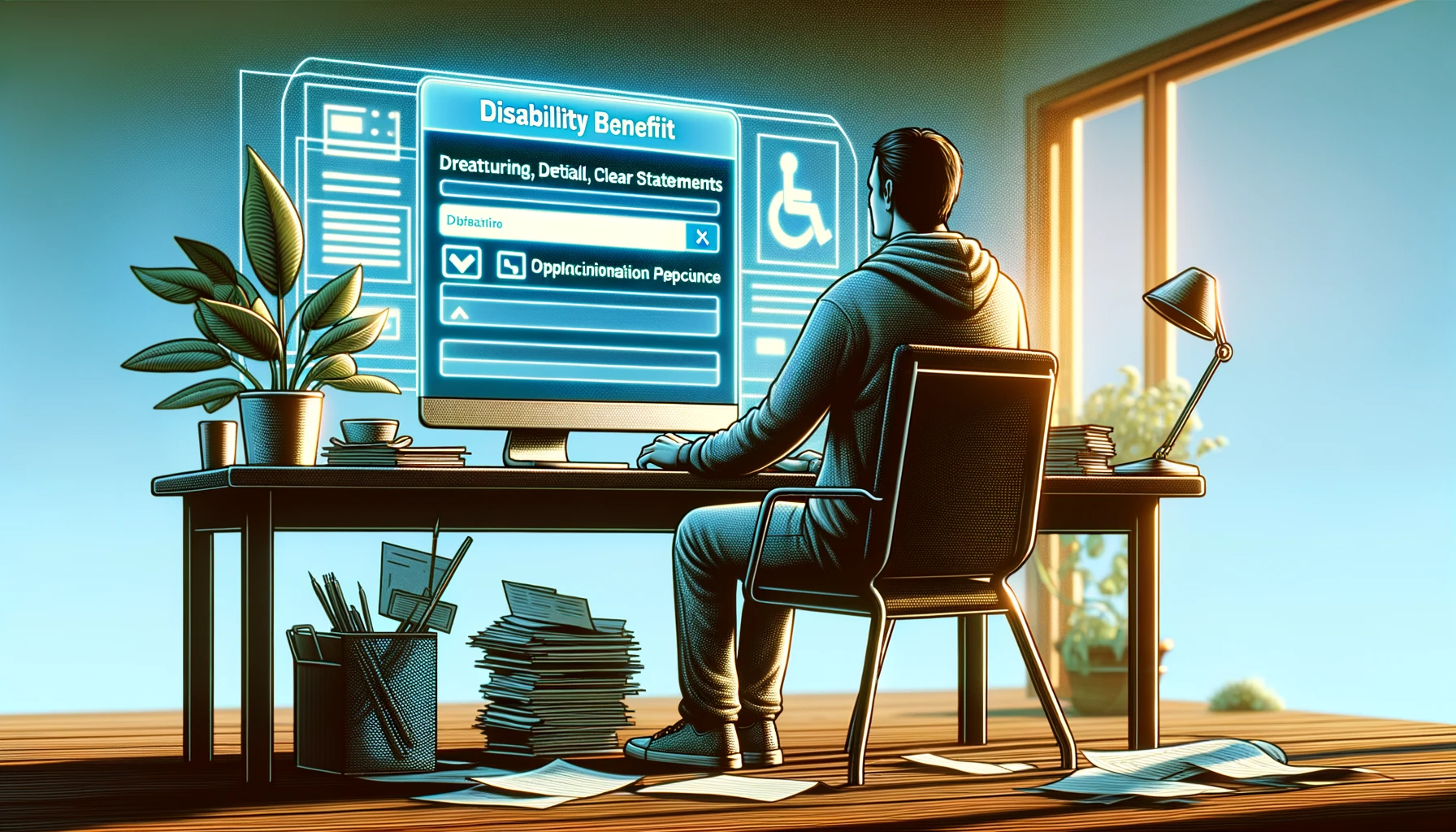 Artificial intelligence is known to be a useful tool to help people write better and faster. For professional writers, journalists and academics, there are concerns AI could replace these jobs and it could lead to more plagiarism and fraudulent or incorrect content.
Artificial intelligence is known to be a useful tool to help people write better and faster. For professional writers, journalists and academics, there are concerns AI could replace these jobs and it could lead to more plagiarism and fraudulent or incorrect content.
Furthermore, there is the risk of more school children and students relying on AI to complete essays, dissertations and other academic projects.
However, AI can still be a lifeline for people who have physical, sensory or cognitive impairments or the people who advocate for disabled people. AI can assist with writing letters and supporting statements for things like care support, benefits or medical enquiries.
Using AI to help apply for Disability Benefits
Filling out disability benefit applications can be stressful and lengthy. It often involves detailing important information.
Tools like ChatGPT can assist by helping to organize thoughts and create clear, detailed statements. This can reduce anxiety about missing key points and improve the overall clarity of the application.
Artificial intelligence can help you or your advocate write or rewrite supporting statements, highlighting your evidence as to why you are entitled to benefit support. It can summarise and organise basic notes you have made and put them in a logical and persuasive order.
Using AI for research and supplying supporting evidence
Also, if you’re doing research for an article or an academic paper, you can use AI to find relevant information.
You can upload documents and text and ask it to be rewritten at the level of language to make things easier to understand.
For example, it can read large medical journals and take out relevant points quickly. Duncan Edwards, our shop manager, is currently writing an article about the difficulties of obtaining sp02 probes from the NHS for people with Dravet syndrome.
He is using AI to read journals and take out research that supports their use and he can leave in the reference for medical professionals to check the sources.
There are many AI assistants people can freely access to do research and write content and documents. Please see our table at the bottom of the post to see recommended tools.
Medicine and healthcare using AI
Artificial intelligence is becoming a vital tool in the healthcare sector, supporting doctors, nurses and other clinicians to diagnose, treat and cure health conditions and diseases.
Examples of AI that are currently being used to benefit people in health and care include analysing X-rays, reading brain scans, reviewing antibiotic prescriptions, detecting early signs of neurodegenerative diseases, assessing epilepsy treatment, diagnosing ADHD and supporting patients on virtual wards, to name a few.
- Quick Medical Problem Identification: AI helps doctors quickly find health issues. It analyzes medical images to alert about problems like abdominal aortic aneurysms, speeding up clinical practice use (MDPI, Cedars-Sinai).
- Discreet Health Monitoring: AI allows for low-key health tracking. It uses sensors for insights with minimal hassle (MDPI).
- Smarter Prosthetics: AI is improving prosthetics, making them more responsive and easier to control (MDPI).
- Language Model Tools: AI tools like LLMs read medical scans and predict diseases like Alzheimer’s. They help with admin work, like record-keeping and insurance (NCBI).
- Generalist Medical AI: This new AI type checks a patient’s full medical record against all medical data and literature. It could do multiple tasks, changing medical AI (NCBI).
- Drug Discovery and Development: AI speeds up finding and making new drugs, reducing time and costs (MDPI, Cedars-Sinai).
- AI in Medical Training: AI models train medical pros, answering exam questions at an expert level (NCBI).
- Early Disease Detection: AI in health apps helps people find serious health issues earlier (MDPI, Cedars-Sinai).
These advances show AI’s role in improving healthcare, from diagnosis to patient care. These AI strategies are all at different phases in their development and will continue to be tested and monitored by healthcare professionals and technology experts. Its success needs doctors and data scientists working together, following ethical rules (Cedars-Sinai).
How will Driverless cars improve the lives of disabled people?
A driverless (or self-driving) car is a fully automated vehicle that can get from A to B safely without a human touching the steering wheel.
Driverless cars are operated by artificial intelligence. In this case, a smart system responds intelligently to the road the way a human driver would. They’re sometimes known as autonomous cars as they’re capable of understanding their environment without needing human involvement.
Driverless cars would be a monumental advance for disabled people who have limited mobility, sight loss, or other impairments that may prevent them from being able to drive a car. This could increase their quality of life, independence and freedom.
At this stage, testing is continuing and some people still have concerns about how safe self-driving cars are.
The UK government has launched an ambitious plan that could see self-driving vehicles on UK roads by 2025. The government’s vision for driverless vehicles is backed by £100 million, including £34 million for safety research. There’s still a lot more work to be done, so the government’s 2025 target may be optimistic. In reality, it could be a few more years before fully autonomous cars are widely available in this country.
Some AI tools to try and suggested uses
- Chat GPT: Known for efficient customer service, Chat GPT can handle multiple requests simultaneously and provide immediate responses. This can be especially helpful for disabled individuals who require quick, consistent support and communication assistance. Its 24/7 availability and capacity to scale support make it a strong candidate for providing accessible customer service and interactive, personalized user experiences.
- Claude.ai: Unique in its ability to read, analyze, and summarize uploaded files, Claude.ai is beneficial for processing and understanding large amounts of text. This feature is particularly useful for disabled individuals who need assistance in summarizing documents or comprehending lengthy texts. Additionally, its capability to handle longer inputs and outputs can be advantageous for more complex or detailed discussions.
- Bing Chat: Bing Chat Enterprise offers AI-powered web chat with commercial data protection and provides complete answers with citations. Its ability to deliver human-like conversational responses and handle current events queries can be particularly helpful for disabled users seeking detailed, verifiable information.
- Perplexity.ai: As an AI-chat-based conversational search engine, Perplexity.ai is powered by OpenAI’s GPT-3.5 and uses NLP and machine learning to provide precise and accurate answers. Its ability to perform focused searches in academic literature and other sources, along with citing sources in its output, makes it a useful tool for research and information gathering for disabled individuals.
- Poe.com (Quora’s Poe): Poe is a chatbot service that allows users to interact with various chatbots, including ChatGPT and Claude from Anthropic. It provides the ability to have back-and-forth conversations with AI, which can be beneficial for disabled people in need of diverse AI perspectives and responses. Access to a range of chatbots developed by different companies offers a wide spectrum of information and interaction styles.
Table of AI tools you may want to try
Here’s a table summarizing the AI tools mentioned, along with a brief description and a link for each:
| Tool Name | Summary | Link |
|---|---|---|
| Chat GPT | Efficient AI tool for customer service with immediate response capability and 24/7 support. | Chat GPT |
| Claude.ai | AI tool capable of reading, analyzing, and summarizing documents, with long input/output processing. | Claude.ai |
| Bing Chat | Offers AI-powered web chat with data protection and complete, verifiable answers with citations. | Bing Chat |
| Perplexity.ai | AI-chat-based conversational search engine providing precise answers, with focused searches in academic literature. | Perplexity.ai |
| Poe.com (Quora’s Poe) | Chatbot service enables interactions with various AI chatbots including ChatGPT and Claude. | Poe.com |
Can you suggest other ways artificial intelligence can benefit disabled people? Let us know in the comments box or on social media.
This guest post was written by Emma at Crip Life™, edited and additional information added by Duncan Edwards. Read more about Crip Life™ below:
About Crip Life™
Crip Life™ is an online disability magazine dismantling disabling barriers one article at a time. Launched in May 2023, it was founded by Emma Purcell and Joanna Baker-Rogers, who both have personal experiences of living with a disability.
Since launching over six months ago, Crip Life™ has published over 60 articles, secured exclusive interviews and collaborated with a dozen companies. It has reached 3.9K visitors, a combined social media following of 1100 followers and over 160 subscribers to the free monthly newsletter.
Crip Life™ has had the privilege of interviewing famous people such as disabled actors Jack Carroll & Tommy Jessop, blind comedian Chris McCausland, deaf DJ Troi Lee, amputee footballer Shelbée Clarke and inclusive fashion designer Victoria Jenkins.
Emma Purcell, who is Crip Life™’s feature writer and editor, has written several opinion pieces including a review of Rosie Jones’ ableism documentary and a piece discussing whether sports broadcasters are ableist towards disability sports.
To browse more content on Crip Life™ and subscribe to the FREE monthly newsletter, visit criplife.co.uk. You can also follow Crip Life™ on Facebook, Twitter, Instagram and LinkedIn.

